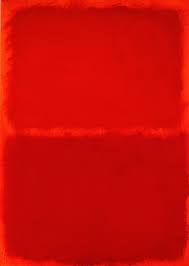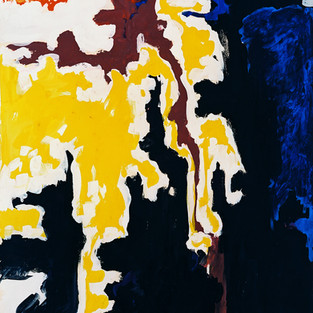A Conversation on Michael Fried and Meyer Schapiro
- Breck Smith

- Oct 6, 2020
- 6 min read
This blog discusses Michael Fried’s concepts of absorption, “theatricality,” and “antitheatricality”, and Meyer Schapiro’s unique use of formalism to describe Early Medieval and Romanesque art.

Breck: Michael Fried is someone I read a lot – in fact, I have read almost every one of his books on art criticism and art history. His essay of 1967, “Art and Objecthood,” was a seminal essay in modern art criticism. He wrote a great deal of art criticism in the 60s and he’s written art history and criticism steadily since then. He’s also written about literature, and he’s a published poet of some renown. He’s a very interesting thinker – very good at making you think about visual art and how or why a work of visual art is successful (or not).
Stephania: What do you mean by successful?
Breck: Successful in this context means whether or not it is able to communicate the artist’s intentions to the viewer.
Stephania: So tell me about Fried. I’ve heard you talk about his concept of antitheatricality. Where does that come from, and what does it mean?
Breck: Antitheatricality is a thesis that I think he developed as a graduate student, and it is difficult to understand. It means art that isn’t exhibitionistic or overly dramatic is “antitheatrical,” and art that is exhibitionistic and highly dramatic is “theatrical.” According to Fried, there is a tradition of this antitheatricality that began in France in the 18th century. I’m not sure, but I think he tries to trace it back in Italian art as least as far back as Caravaggio in the 17th century, but I don’t know if I am reading him correctly. He values antitheatrical art over theatrical art. Fried argues that whenever a self-consciousness of viewing exists, absorption (being absorbed in the artwork) is compromised and theatricality results.
Stephania: That doesn’t make sense to me. If a work is dramatic – whether joyful, tragic, morbid, or whatever, that is when I feel like I become most absorbed in the work. I can look at it for long periods and almost move into it. I mean, would he call the Sistine Chapel theatrical? I walked around practically in tears staring at it until my neck hurt too much to continue. I was very aware of being in a place of almost mystical beauty, and felt awestruck that I, Stephania Smith, could stand beneath a ceiling that was painted over 500 years ago.
Breck: It helps to have a little background. Most of what Fried writes is art history. He did his doctoral dissertation on the French painter Manet but later came out with a trilogy of books related to these concepts. The first was entitled Absorption and Theatricality: Painting and Beholder in the Age of Diderot, (Diderot was a French philosopher of the 18th century). The second was Courbet’s Realism (which had to do with French art in the 19th century; Courbet was a 19th century French realist). The third was Manet’s Modernism (Manet was a French artist of the late 19th century). So in these books he introduces the concepts I’m talking about: absorption, theatricality, and antitheatricality. Fried mostly traces the concept of antitheatricality through French art, though there are traces of it elsewhere.
In “Art and Objecthood” he talks about the theatricality of minimalist art, which he preferred to call literalist art. He said, “The answer I want to propose is this: the literalist espousal of objecthood amounts to nothing other than a plea for a new genre of theater, and theater is now the negation of art. Literalist sensibility is theatrical because, to begin with, it is concerned with the actual circumstances in which the beholder encounters literalist work. Morris* makes this explicit. Whereas in previous art [here quoting Morris] ‘What is to be had from the work is located strictly with [it],’ the experience of literalist art is of an object in a situation – one that, virtually by definition, includes the beholder.” As I noted above, Fried believes that absorption (or being truly absorbed in the artwork) cannot exist when the viewer is aware that he or she is looking at the artwork.
Stephania: So it’s kind of like that self-consciousness precludes true appreciation of the art? Me thinking, “Here I am, looking at art,” means I can’t fully absorb the content of the work? And when he speaks of theatricality, does that term refer to a characteristic of the artwork itself that evokes this self-consciousness? Or does he mean that theatricality is a characteristic of the situation? My sense is that it is the first one – certain art is theatrical.
Breck: Yes, that’s true.
After I read his essay “Art and Objecthood,” I was about two-thirds of the way through one of his art history books before I realized that when he was talking about theatricality and theater, he wasn’t talking about theater, the art form, per se. He was talking about art which is overly dramatic. I think the best explanation I’ve read of what he is talking about is when Fried quotes Wittgenstein talking about actors being trained to imagine a fourth wall existing between them and the audience.
Stephania: What are the first three walls?
Breck: Those are the back and two sides of the stage. The fourth wall stands directly between the front of the stage (and hence the actors) and the audience. Theatricality is when the actors are very aware that they are acting for an audience and they are inclined to overact or overdramatize. It’s a showiness, I think, that Fried is talking about. On the other hand, if there were this wall that prevented the actors from seeing the audience, then they would “act” their parts more naturally and more true to the characters. It’s a parallel with artists. Sometimes the artist was being theatrical – being aware of his or her audience and kind of playing to that audience. That produces theatrical art.

Stephania: So tell me about Schapiro.
Breck: The last couple years I have also been reading Meyer Schapiro. I’ve especially looked at what Schapiro has written on Modern art, and on Early Medieval and Romanesque art. Interestingly, his writing on Early Medieval and Romanesque art seems to bear more on formalistic concerns, which is normally what art critics write about when they are writing about Modern or Contemporary art. By formalistic concerns, I mean for example what he talks about in patterns in early Hiberno-Saxon manuscript illumination. The illumination is the pictorial decoration and embellishment in the manuscript, not generally the textual calligraphy. These manuscripts are works copied by monks in monasteries located in what is now Ireland, Scotland, and England. Schapiro talks about how the patterns in these manuscripts can be seen as reflecting a meditative state of mind or a more agitated, earnest state of mind. He’s able to do this by describing both the depiction of representational things and the depiction of abstract shapes and the way in which the monks in the monasteries depicted those shapes. (For those unfamiliar with formalism in art, it refers to the analysis of art objects in terms of their form – their visual aspects, like shapes and styles, and the way they are made.) Schapiro states that the more agitated style may reflect a more evangelical zeal in the monks doing the illuminations.
Rothko Pollock Still
Think about the difference between the frenetic active surface of a Jackson Pollock painting or a canvas by deKooning vs. the meditative nature of those big squares of color by Mark Rothko or the large canvases of Barnett Newman or Clyfford Still. What’s interesting is how Schapiro is able to bring this kind of modernist formal analysis to bear upon what the monks, who were artists, were doing a millennium ago.
Schapiro also makes the case that often once the monks/artists had expressed the intent of the monastery (both religious and political), they were relatively free to express themselves in their work. This leads me to wonder if, once the artist had fulfilled their main task of satisfying the abbot, the abbot didn’t care about what little embellishments were put into their illuminations. I say this because, as Schapiro pointed out, sometimes there were some pretty profane images in there (such as whimsical secular images of animals as church clergy, or humorous to sometimes violent autoerotic images, for example).
One of his essays, “Frame, Field, and Figure,” uses formalistic analysis on (among other
things) an illuminated manuscript of the author page of the Book of Matthew from Northumbria or Echternach (they’re not sure which). They call those the Echternach Gospels, however. The four authors of the gospels (the Four Evangelists) each have a symbol, and the symbol for Matthew is a man. This particular illumination has as its central figure Matthew’s symbol of a man, sort of cylindrical shaped. From the head extend two bars, and from the top and bottom another two bars. At first glance one might think this represents a crucifix. He states, “In form it may resemble a cross, but the mode of constraining the figure, which it clamps in place, and it’s continuity with the surrounding frame through the interlace filling [in the frame] convinced me that it has a role other than that of symbolizing a cross.” In his formalist analysis, Shapiro goes on and looks not only at shapes, but at what shapes do, or the visual effects they produce. Shapiro states, “[The clamps and frame around the figure are] a fundamental invention of the artist, a new way of realizing the immobility of the figure and his nature as an evangelist who ceremoniously displays his open book.”

It’s just interesting to me how Shapiro uses a 20th century form of analysis on these artworks from the 7th and 8th centuries.
*He is referring to the Minimalist sculptor Robert Morris.










Comments